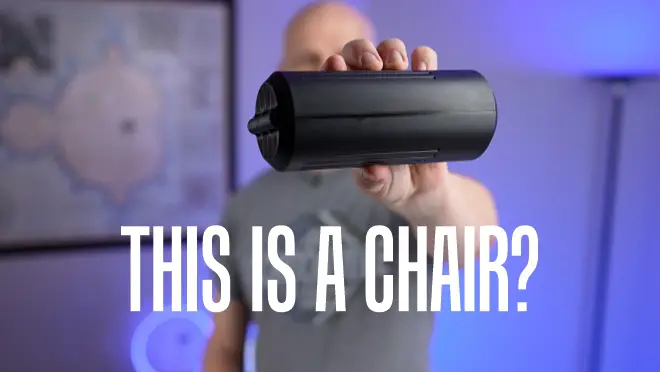I recently had the opportunity to test out the Sitpack 2.0, a unique device that claims to be a chair that can fold down to the size of a soda can. I purchased the Sitpack for $55, and it currently holds a 3.7-star rating on Amazon. The packaging proudly states that it can fold down to a compact size of 2.75 by 6.75 inches, but when fully extended, it reaches a height of 34 inches. The adjustable height feature aims to provide relief from back and leg pain during various activities such as events, travel, and concerts. Let’s see if this unconventional “chair” lives up to the hype.
Where to Purchase
I picked up my Sitpack on Amazon for $54.59. As of this July 2024 update, Sitpack is unavailable on Amazon but it’s still sold on the official website, sitpack.com.
Sitpack 2.0 Review
Upon unboxing, I discovered that the SitPack is more akin to a one-legged stool than a conventional chair. However, let’s play along and refer to it as a chair, just as the manufacturer does. User reviews are divided, with some praising its solid construction and found it well-made, particularly for use at concerts or amusement parks. Others, however, expressed dissatisfaction, mentioning difficulties in adjusting it, wobbliness, and even the risk of falling off.
Setting it up was a breeze. Simply pull it apart to open, and voila, your seat takes form. I must admit, the seat itself is not the epitome of comfort. Once opened, there’s a sleeve that secures the seat in place, and twisting it locks everything down. Extending the Sitpack to its full height was a simple task, and a faint line helped ensure proper alignment. However, the instructions advise against sitting directly on it and suggest using it primarily for leaning at a 40-degree angle. Adhering to their guidance, I cautiously positioned myself, and surprisingly, I managed to remain upright.
To put the Sitpack to the test in real-world scenarios, I decided to take it outdoors. I experimented with different surfaces, from smoother terrain to rocky ground. While it provided a leaning support, I couldn’t shake the feeling that I was merely leaning rather than sitting. The discomfort grew apparent over time, and I imagine this would be particularly uncomfortable for individuals with bony backsides. I couldn’t help but compare it to another stool I’ve previously reviewed, which offered a more comfortable seating experience. This alternative stool allowed for proper sitting and served multiple purposes, although it didn’t fold down as compactly as the Sitpack. You can find that stool on Amazon.
Curiosity drove me further, and I ventured into a hiking test. Loaded with my backpack, the Sitpack securely nestled in the side pocket, mimicking a water bottle. As I hiked through the desert heat, I anticipated a well-deserved break. However, upon sitting, I realized that the Sitpack required constant leg muscle engagement for stability on the slightly inclined surface. It was far from a restful experience, unlike conventional sitting. I couldn’t help but appreciate the comfort of a rock or simply finding a spot to kneel.
In conclusion, the Sitpack 2.0 has its merits in specific situations. It might be suitable for individuals constantly on the move in amusement parks or as a temporary resting solution during events. However, it falls short of providing a comprehensive seating solution. While the compactness and portability are commendable, the comfort and stability leave something to be desired. If you’ve tried the Sitpack, tell me what you think in the comments below.
Be sure to watch my full Sitpack review on YouTube.
Updated November 2024

